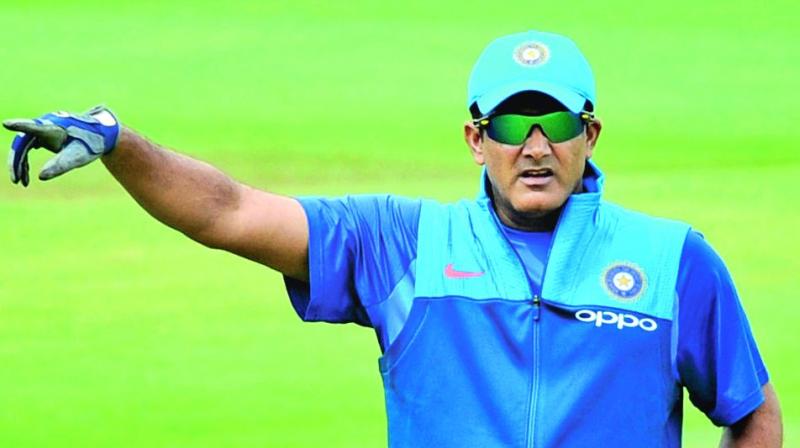Superstar syndrome not new to India

Sunday’s much-touted match between India and Pakistan, has been overwhelmed by the conflict between coach Anil Kumble and skipper Virat Kohli which has taken centre-stage.
Rumours about this had been flying for a while prior to the start of the Champions Trophy but were dismissed as media kite-flying by BCCI officials in India and those currently in England.
The scathing resignation letter written by noted historian and author Ramchandra Guha, one of four in the Committee Of Administrators (COA) appointed by the Supreme Court, has laid this defence to rest.
Apart from all else, the letter also discloses the rift between coach and captain. Guha unequivocally rallies behind Kumble who he says, was “left hanging” where extension of his tenure is concerned because of Kohli’s objections.
Overall, Guha virtually indicts the COA for being namby-pamby in pushing through reforms in the Indian cricket establishment as demanded by the Supreme Court based on the Justice Lodha recommendations.
This is significant for Guha’s complaints about the rot within the BCCI are not that of an outsider passing observations now, rather as a whistleblower. This puts direct onus on the Supreme Court and how the apex court moves from here will be interesting to see.
There can, of course, be argument about the timing of Guha’s letter. It comes on the eve of the big match against Pakistan and its effect will surely ring through the entire Champions Trophy where India are defending champions.
There is also the point of view that Guha has been impatient. If the disease is so serious, a quick fix remedy is difficult. With the mandate of the Supreme Court secure, should he have have given himself (and the COA) enough time to implement the reforms?
Most of what Guha writes about the BCCI in the letter, of course, is not new or unknown. Scores of articles have appeared for years about the dysfunctional manner in which the Board functions: notably lack of transparency and cases of conflict of interest - old and new, glaring and oblique.
Indeed, media houses now have special beat reporters to track the shenanigans of the BCCI! Some of these are so widespread or deeply embedded in the system that they have acquired legitimacy.
That precisely is the reason why the Committee Of Administrators came into existence, of course. However, at the crux of the letter - and what perhaps precipitated Guha’s decision to resign - is the Kumbe-Kohli imbroglio.
In the immediate context this has more relevance and has obviously engaged everybody’s attention, with opinion being divided down the middle. My reading is it could be more complex than what Guha attributes it to.
The ‘superstar syndrome’ is not new to Indian cricket. Or for that matter any sport anywhere in the world. The ‘stardom quotient’ in Indian cricket has undoubtedly grown exponentially as it has become more popular and richer.
But this is not restricted to cricket alone in the country There are strong instances of star power at play in tennis, wrestling, badminton et al. as we have seen in recent years for Davis Cup ties and the Olympics.
Sport as a public spectacle — particularly with big rewards — is bound to create stars and to rail against it becomes pointless. Rather, how superstars manage themselves and how they are managed in turn - by authority, coaches and other support systems — is of the essence.
How this manifests itself can be a generational or societal function. Restricting the discussion to Indian cricket and coaches, in the past couple of decades too, top Indian players insisted on a say in the appointment of a coach - or voting one out.
Going ahead, other complexities appear on the horizon. Cricket is a team sport, but already players are showing a tendency (aided by financial well-being) of hiring personal coaches a la tennis, which could potentially become an area of deep conflict.
Essentially, the issue is of compatibility. Differences of opinion are inevitable in the high-pressure demand of international sport, but loss of faith can tear the relationship apart.
This is what baffles me about the Kumble-Kohli tangle. It seemed a relationship made in heaven: both of impeccable credentials and as the past year has shown, producing brilliant results. Contrasting personalities, sure, which added to their appeal as a pair.
The partnership looked set for a long haul. What could possibly go wrong? But something has. As an Indian cricket lover, this is among the saddest developments I’ve seen; as a student of life it intrigues and fascinates me.
Where the fault lies, I’m clueless. Till such time as the facts emerge I’ll live with American science writer Michael Shermer’s profound observation as solace: “Human history is highly non-linear and unpredictable.”

